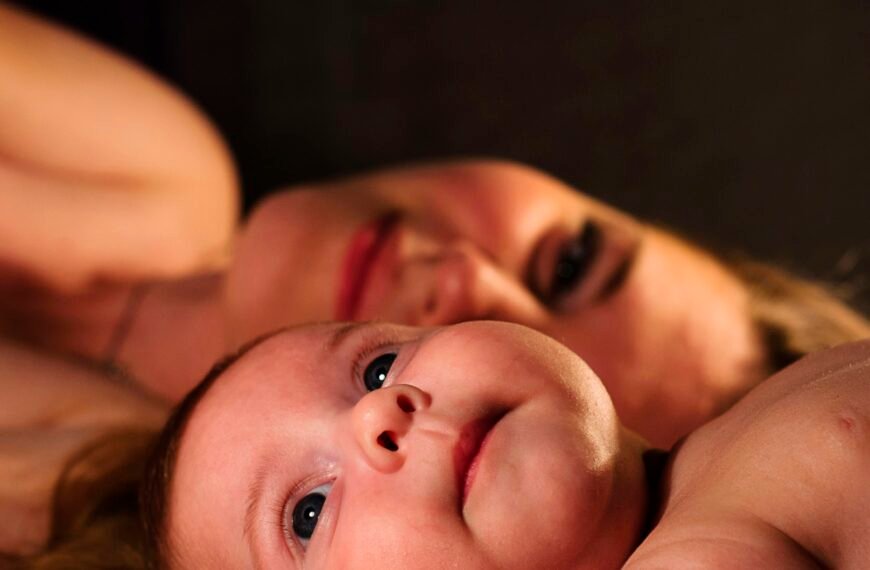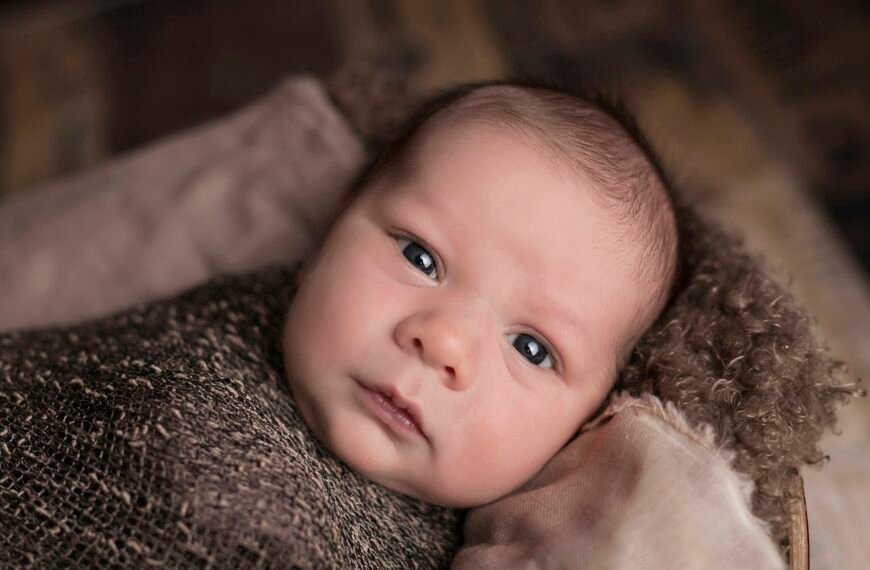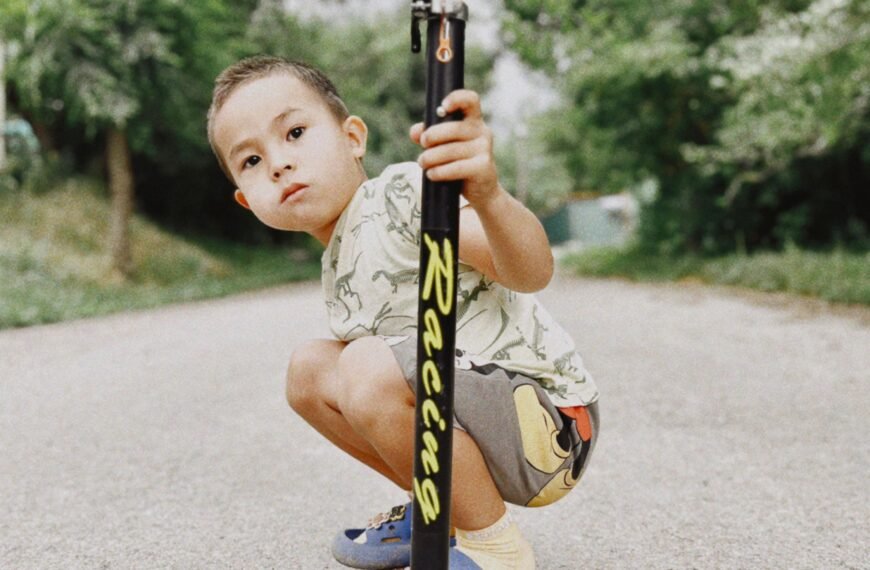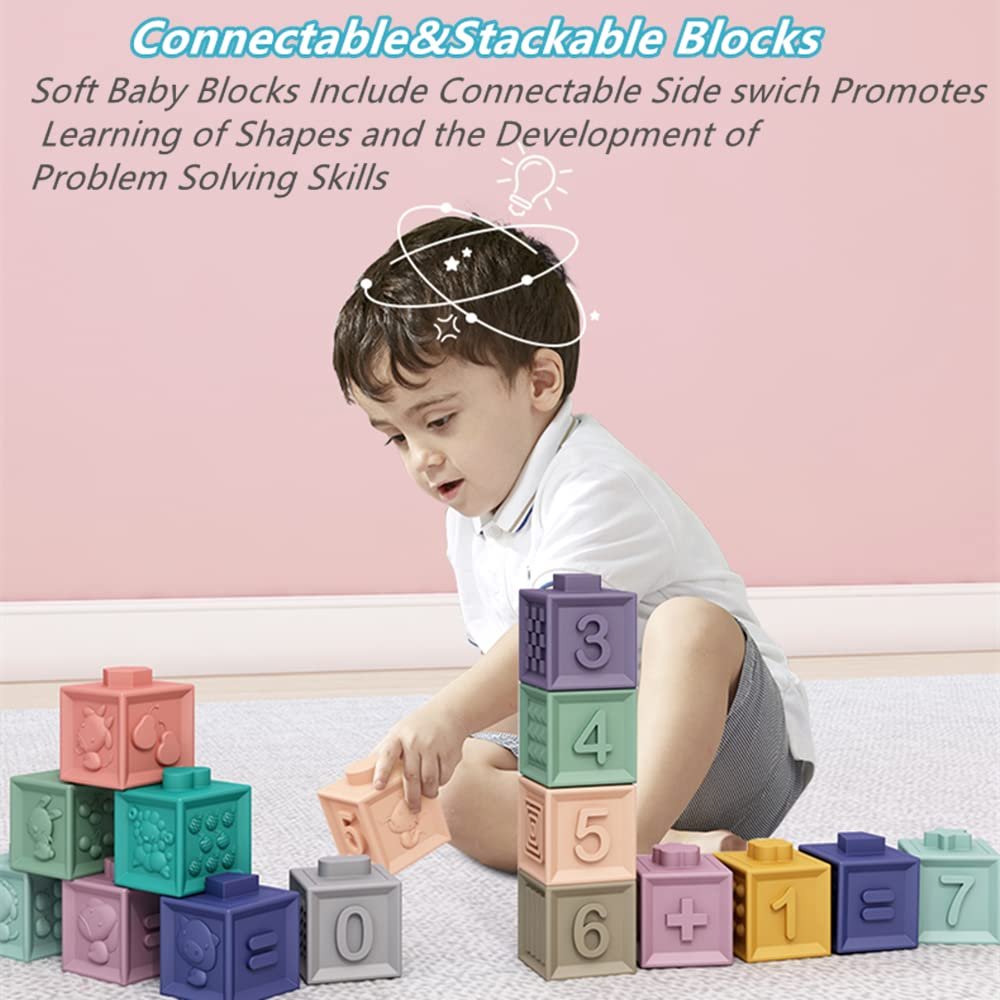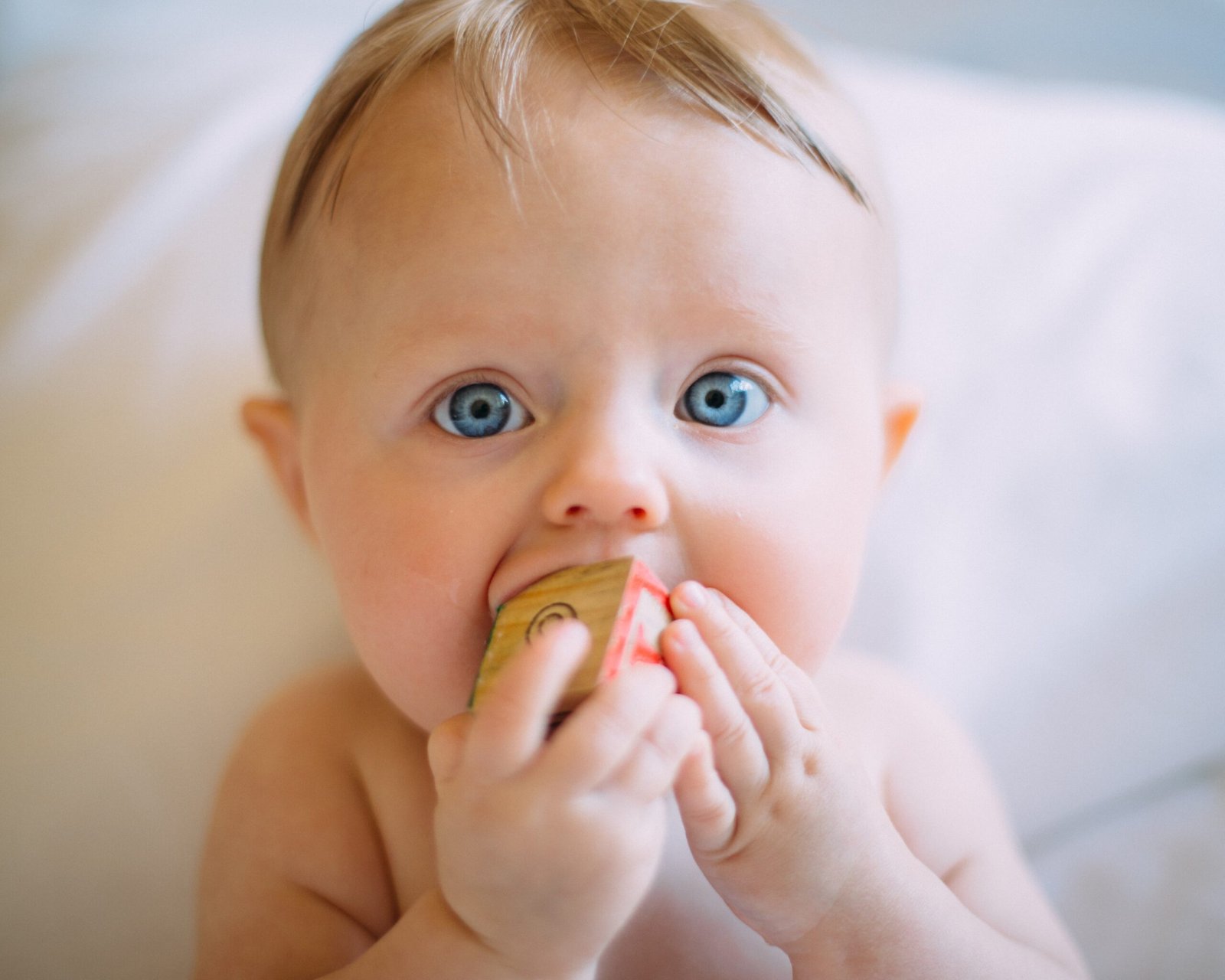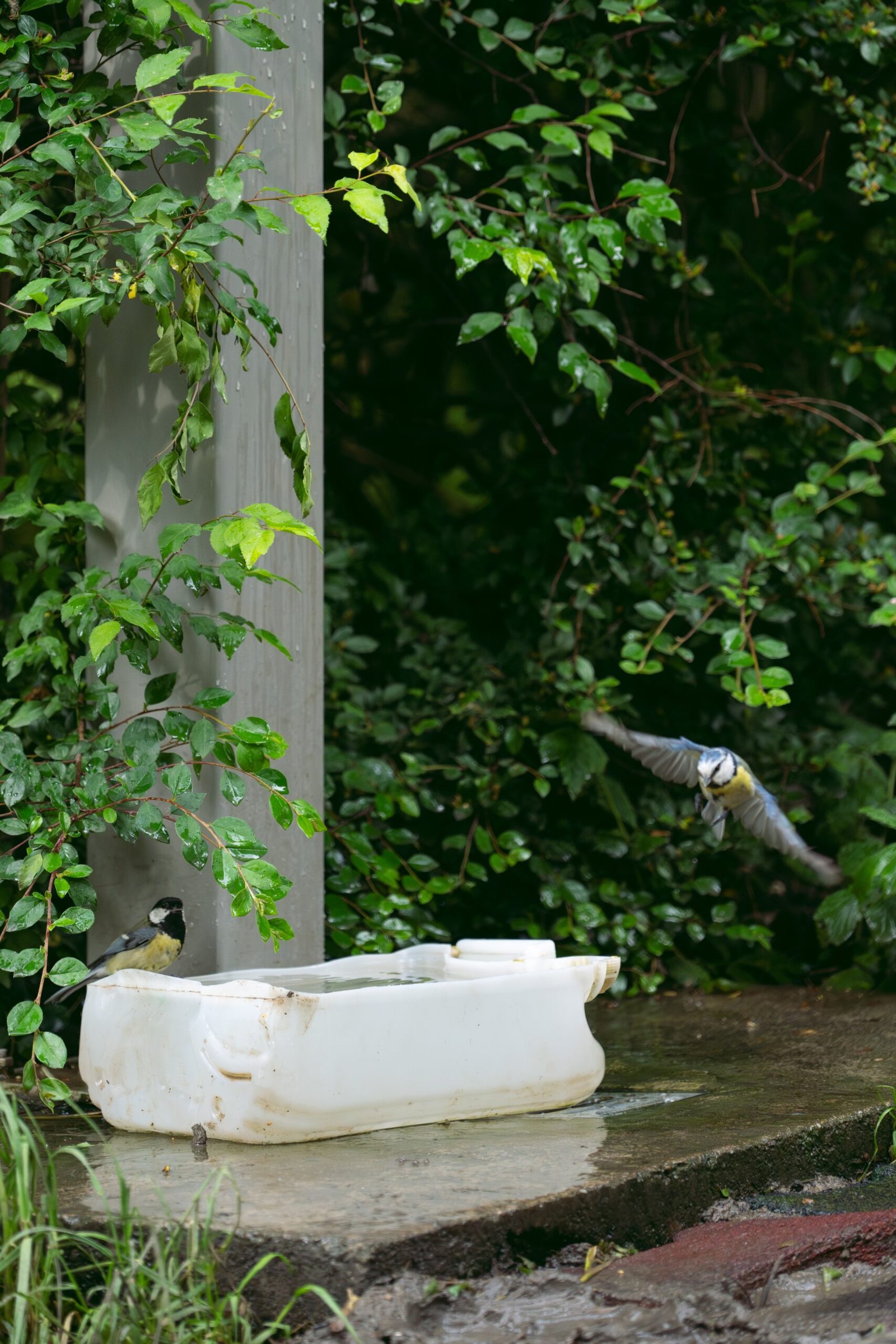Imagine the joy and excitement that fills the room when you notice your little one reaching out for their very first toy. It is a milestone moment that marks the beginning of their exploration and discovery of the world around them. As your baby starts playing with toys, they embark on a journey of cognitive and physical development, honing their coordination skills while unraveling the wonders of cause and effect. Through play, their creativity blossoms, and their imagination takes flight, opening up a world of possibilities. In this article, we will explore the significance of when babies start playing with toys and how it contributes to their overall growth and development.

Check Baby Toys Guide & Review
Benefits of Playing with Toys
Playing with toys offers a myriad of benefits for children of all ages. From promoting physical and cognitive development to fostering imagination and creativity, toys play a crucial role in a child’s growth and learning. Let’s take a closer look at some of the key advantages of playing with toys.
Development of Motor Skills
Playing with toys helps children develop their motor skills, which involve the coordination of muscles and movements. For infants, toys such as rattles and teethers can assist in practicing grasping and hand-eye coordination. As they grow older, toys like building blocks and puzzles encourage the refinement of fine motor skills, enabling children to manipulate objects with precision.
Enhancement of Cognitive Skills
Toys act as valuable tools in enhancing cognitive skills. Through interactive and stimulating play, children learn to think critically, solve problems, and develop memory skills. Toys that promote problem-solving, such as puzzles and building blocks, encourage logical thinking and spatial awareness. Furthermore, educational toys and games can facilitate learning of various subjects, including math, science, and language.
Stimulation of Imagination and Creativity
Playing with toys ignites the imagination and sparks creativity within children. Whether it’s pretending to be a superhero with action figures or constructing an elaborate castle with building blocks, toys provide a platform for open-ended play and imaginative scenarios. This helps children explore different roles, situations, and emotions, fostering their creativity and problem-solving abilities.
Improvement in Social Interaction
Toys facilitate social interaction and help children develop important social skills. Playing with others, whether it’s siblings, peers, or even parents, allows children to practice sharing, taking turns, and cooperative play. Board games and interactive toys provide opportunities for children to learn about teamwork, empathy, and effective communication, laying the foundation for healthy social relationships as they grow older.
Promotion of Language Development
Toys play a significant role in promoting language development in children. From simple rattles with different sounds to interactive books that introduce words and phrases, toys can help enhance vocabulary and language skills. Language development toys, such as talking dolls or electronic learning devices, encourage children to listen, speak, and communicate effectively. They also provide a platform for storytelling and imaginative play, allowing children to express themselves verbally.
Age Range for Playing with Toys
It is essential to consider age appropriateness when selecting toys for children. Different age ranges necessitate toys that cater to their specific developmental needs and abilities. Let’s explore the recommended toy options for various age groups:
0-3 Months
During the first few months of life, babies are mainly focused on developing their senses. Soft plush toys and rattles with gentle sounds and contrasting patterns are ideal for stimulating their visual and auditory senses. Toys that can be grasped and safely brought to the mouth, such as teething rings, provide comfort and promote early motor skills development.
4-6 Months
As infants reach the 4-6 month mark, they start to exhibit improved hand control and are more interested in exploring objects. Stacking and sorting toys, as well as shape sorters, can offer them a tactile experience while encouraging hand-eye coordination and problem-solving skills. Activity centers with various elements to manipulate and explore can also engage their growing curiosity.
7-9 Months
At this stage, babies are becoming more mobile and developing their fine motor skills. Toys that allow them to push, pull, and crawl, such as activity walkers or push toys, can support their physical development. Musical toys with buttons and knobs that produce different sounds are also popular choices, as they encourage cause-and-effect understanding and auditory stimulation.
10-12 Months
As infants approach their first birthday, they are likely starting to stand, cruise, or even take their first steps. Toys that provide support for their physical development, such as ride-on toys or push-along walkers, are suitable options. Building blocks and simple puzzles can also be introduced to promote hand-eye coordination, problem-solving, and spatial awareness.
1-2 Years
Toddlers between the ages of 1 and 2 are highly active and curious. They enjoy toys that allow them to explore their surroundings and engage their senses. Interactive toys, such as shape sorters with different textures and sounds, can stimulate their cognitive and sensory development. Musical instruments, building blocks, and age-appropriate puzzles continue to support their fine motor skills and problem-solving abilities.
2-3 Years
As children reach the age of 2 to 3, their play becomes more imaginative and creative. Pretend play toys, such as play kitchens, tea sets, and dress-up costumes, encourage imaginative role-playing and storytelling. Building sets with more complex structures, larger puzzles, and art supplies can further enhance their fine motor skills, cognitive abilities, and artistic expression.
Safe Toy Selection
Ensuring the safety of toys is of utmost importance when selecting toys for children. Here are some essential factors to consider for safe toy selection:
Age Appropriateness
Choose toys that are appropriate for your child’s age and developmental stage. Toys with small parts, for instance, may pose a choking hazard for younger children. Always follow the recommended age guidelines provided by the manufacturer to ensure your child’s safety.
Non-Toxic Materials
Select toys that are made from non-toxic materials, ensuring they are free from harmful chemicals or substances that could be hazardous to your child’s health. Look for toys that comply with safety regulations and standards, such as the Consumer Product Safety Commission (CPSC) guidelines, to ensure their safety.
Durability
Opt for toys that are built to withstand rigorous play and are unlikely to break easily. Sturdy construction prevents potential hazards from broken pieces or sharp edges. Check for any signs of weakness or damage before allowing your child to play with a toy.
No Small Parts
Avoid toys with small parts that can be easily detached or swallowed. Younger children have a natural inclination to put objects in their mouths, which can be a choking hazard. If a toy has small detachable parts, make sure they are securely fastened and cannot be easily removed.
No Sharp Edges
Inspect toys for any sharp edges or protrusions that could potentially cause injury. Ensure that edges are smooth and rounded to minimize the risk of cuts or scratches.
Avoid Choking Hazards
Beware of toys with small balls, marbles, or other objects that can obstruct a child’s airway. Pay attention to the size of the toy and ensure it is appropriate for your child’s age. If a toy has small parts, make sure they are securely attached and cannot be easily swallowed.
Certification Standards
Look for toys that have been tested and certified to meet safety standards. Certification labels such as the ASTM International, the Juvenile Products Manufacturers Association (JPMA) seal, or the European CE (Conformité Européene) mark indicate that the toy has passed rigorous safety tests.
Popular Types of Toys
Toys come in various shapes, sizes, and forms, each offering unique play experiences. Here are some popular types of toys that cater to different interests and developmental needs:
Soft Plush Toys
Soft plush toys provide comfort and companionship for infants and young children. They offer tactile stimulation and can become comforting objects during bedtime or naptime. Plush toys often come in different colors, textures, and characters, appealing to a child’s sensory and emotional development.
Rattles and Teethers
Rattles and teethers are excellent toys for babies during their early stages of development. These toys promote sensory exploration, encourage grasping and shaking movements, and provide relief for teething discomfort. Rattles with various textures and sounds can enhance auditory and tactile stimulation.
Stacking and Sorting Toys
Stacking and sorting toys help children develop their hand-eye coordination, spatial awareness, and problem-solving skills. These toys typically consist of different-sized shapes that can be stacked on top of each other or sorted into corresponding slots. They provide a fun and interactive way for children to learn about shapes, sizes, and colors.
Shape Sorters
Shape sorters are toys designed to challenge children’s problem-solving abilities. They come with various shapes that need to be fitted into corresponding holes or slots. By figuring out which shape fits where, children learn about shapes, spatial relationships, and logical thinking.
Activity Centers
Activity centers are versatile toys that offer multiple play elements in one product. They often include features like spinning gears, sliding beads, buttons to push, levers to pull, and mirrors to look into. Activity centers promote fine motor skills, hand-eye coordination, and sensory exploration in a compact and engaging manner.
Musical Toys
Musical toys stimulate a child’s auditory senses and provide an exciting way to explore sound and rhythm. They often feature buttons or keys that produce different tones or melodies when pressed. Musical toys can encourage a love for music and rhythm while developing hand-eye coordination and fine motor skills.
Building Blocks
Building blocks are timeless toys that promote creativity, problem-solving, and spatial awareness. They come in various sizes and materials, allowing children to build structures, towers, and imaginative scenes. Building blocks also enhance hand-eye coordination, fine motor skills, and logical thinking.
Puzzles
Puzzles are excellent toys for developing problem-solving skills and cognitive abilities. Age-appropriate puzzles challenge children to use their observation, memory, and logic to assemble pieces and complete a picture or design. They come in different sizes and complexity levels, catering to a wide range of developmental stages.
Interactive Toys
Interactive toys engage children in various ways, often incorporating lights, sounds, and movement. From interactive robots to talking dolls, these toys encourage imaginative play, social interaction, and cognitive development. They can also introduce early educational concepts such as letters, numbers, and shapes.
Outdoor Toys
Outdoor toys encourage physical activity and exploration in an outdoor setting. From tricycles and ride-on toys to sand and water play sets, these toys provide opportunities for children to develop their motor skills, coordination, and balance. Outdoor play also promotes a love for nature and the great outdoors.

Choosing Educational Toys
Educational toys play a crucial role in promoting learning and development while engaging children in play. Here are some considerations when choosing educational toys:
Toys that Promote Problem-Solving Skills
Look for toys that require children to think critically, solve puzzles, or complete challenges. These can include building sets, puzzles, or problem-solving games. Such toys stimulate cognitive development, encourage logical thinking, and foster perseverance.
STEM Toys
STEM toys focus on science, technology, engineering, and mathematics concepts. These toys aim to introduce children to these subjects through interactive and hands-on play. STEM toys can include building sets with a focus on engineering principles, coding toys that teach basic programming, or science experiment kits that promote scientific exploration.
Language Development Toys
Toys that foster language development are crucial for children’s communication skills. Look for toys that introduce vocabulary, letters, and words. Talking books, alphabet puzzles, or toys that encourage storytelling and role-playing can enhance language skills and engage children in linguistic exploration.
Art and Creativity Toys
Art and creativity toys provide children with opportunities for self-expression and artistic exploration. Supplies such as crayons, markers, playdough, and art kits can enhance fine motor skills, hand-eye coordination, and creativity. These toys allow children to unleash their imaginations and create their own masterpieces.
Educational Apps and Electronics
In today’s digital age, educational apps and electronic toys can also provide valuable learning experiences. Choose age-appropriate apps or electronic devices that offer educational content, interactive games, or puzzles that promote cognitive development and critical thinking.
Developmental Milestones
Understanding developmental milestones can help guide toy selection and facilitate a child’s optimal growth and learning. Here are some key developmental milestones and the corresponding toys that can support their achievement:
Grasping and Hand-Eye Coordination
During the first few months of life, babies learn to grasp objects and improve hand-eye coordination. Toys that encourage grasping, such as rattles, teething rings, or toys with different textures, help infants refine their motor skills and explore their senses.
Cause and Effect Understanding
Around 6-9 months, infants begin to understand cause and effect relationships. Toys that have buttons to press, levers to pull, or knobs to turn can introduce this concept and provide an interactive learning experience. Musical toys, activity centers, and toys with movable parts are examples of toys that promote cause and effect understanding.
Cognitive Development
From around 1-2 years of age, children’s cognitive abilities rapidly develop. Toys that challenge their thinking, such as shape sorters, puzzles, or building blocks, encourage cognitive growth and problem-solving skills. These toys engage their minds and foster logical thinking.
Sensory Exploration
Infants and toddlers thrive on sensory exploration. Toys with different textures, colors, and sounds provide a multisensory experience, promoting sensory development. Soft plush toys, activity centers, and toys that incorporate lights and music can engage various senses and stimulate sensory exploration.
Symbolic Play
Around 2-3 years of age, children begin to engage in symbolic play, pretending one object represents another. Toys that encourage imaginative play, such as dolls, action figures, play kitchens, or dress-up costumes, foster symbolic play. These toys allow children to develop their creativity, storytelling abilities, and social-emotional understanding.
Pre-Toddler Skills
In the pre-toddler stage, which encompasses ages 1-2, children are refining their motor skills and hand-eye coordination. Toys that involve pushing, pulling, crawling, or walking, such as push-along walkers or ride-on toys, assist in developing these physical abilities. Additionally, age-appropriate puzzles and building blocks can further stimulate dexterity and problem-solving.

Toy Rotation and Variety
Introducing toy rotation and ensuring a variety of toys can enhance a child’s play experience and development. Here are some benefits and considerations of toy rotation and variety:
Benefits of Toy Rotation
Rotating toys periodically helps maintain children’s interest and curiosity. It prevents toys from becoming monotonous and encourages children to explore different play options. Toy rotation can also extend the lifespan of toys and create a fresh and engaging play environment.
Introducing New Toys
Introducing new toys into a child’s playtime routine can spark excitement and curiosity. Bringing in toys that align with their developing skills and interests can stimulate their growth and learning. New toys can offer novel challenges, encourage exploration, and expand a child’s play experiences.
Balancing Toy Variety
Providing a balanced variety of toys ensures that children have exposure to different types of play and experiences. This includes toys that target various developmental areas, such as fine motor skills, language development, creative play, and cognitive growth. A diverse selection of toys contributes to a well-rounded playtime and promotes holistic development.
Relevance to Developmental Stages
Selecting toys that align with a child’s developmental stage is key to optimizing their playtime. As children progress through different milestones, their interests and abilities evolve. Tailoring toy selection to their specific needs and skills promotes engagement, growth, and learning.
Parental Supervision and Engagement
Parental supervision and engagement play crucial roles in a child’s play experience. Here are some ways parents can create a safe and stimulating play environment:
Ensure Toy Safety
Parents need to ensure toys are safe for their child’s age and developmental stage. Regularly inspect toys for any signs of damage, loose parts, or hazards. Supervising playtime helps prevent accidents and ensures toys are being used appropriately.
Encourage Interactive Play
Engaging in interactive play with your child strengthens the bond between parent and child. Encourage cooperative play, turn-taking, and sharing. Participating in playtime together provides opportunities for social interaction, language development, and modeling positive behavior.
Participate in Playtime
Joining your child in play can contribute to their learning and growth. Actively observe their play, ask questions, and engage in dialogue. This demonstrates your interest, encourages their creativity and problem-solving, and offers opportunities for learning and development.
Teach Problem-Solving Skills
Use playtime to teach your child problem-solving skills. When faced with challenges or obstacles during play, guide them in finding solutions rather than intervening immediately. Encourage them to think critically, try different approaches, and persist in finding solutions.
Promote Exploration
Encourage your child to explore and discover new things through play. Provide open-ended toys and materials that allow for experimentation, creativity, and problem-solving. Support their curiosity and encourage them to ask questions and explore different possibilities.
Encouraging Imaginative Play
Imaginative play is essential for a child’s cognitive, emotional, and social development. Here are some strategies to encourage imaginative play:
Provide Open-Ended Toys
Open-ended toys are versatile and can be used in various ways, fueling a child’s imagination. Toys like building blocks, dolls, or art supplies can be manipulated and transformed to suit different play scenarios. Avoid toys with predetermined functions or limited play possibilities.
Create Pretend Play Scenarios
Set the stage for pretend play by creating different play scenarios or themes. For example, create a pretend grocery store, doctor’s office, or restaurant with props and costumes. Encourage your child to take on different roles, act out situations, and engage in storytelling.
Role-Playing Games
Role-playing games allow children to explore different roles and situations, enhancing their social and emotional development. Dress-up costumes, puppets, or play kitchen sets can provide the props and tools necessary for imaginative role-playing. Join in the play, taking on different characters and roles to encourage their imagination and cooperation.
Storytelling and Puppetry
Storytelling and puppetry engage a child’s imagination and language skills. Read storybooks together and encourage your child to retell the story using puppets or props. This allows them to express their creativity, practice storytelling, and develop their listening and language skills.
Creation of Forts and Tents
Building forts or tents using blankets and furniture can create a magical and imaginative play space. Transforming their environment into a secret hideout or a spaceship can inspire hours of imaginative play. Provide pillows, blankets, and props to enhance the play experience.
Age-Appropriate Toy Storage and Organization
Proper toy storage and organization are essential for maintaining an organized and safe play area. Here are some age-appropriate storage options:
Toy Bins and Baskets
Toy bins and baskets are versatile storage solutions that can accommodate a variety of toys. They provide easy access to toys and allow children to see the options available. Labeling bins with words or pictures can help children identify where toys belong and encourage tidiness.
Drawer Systems
Drawer systems with multiple compartments are ideal for organizing smaller toys or art supplies. They allow for easy categorization and prevent toys from getting mixed up or lost. Clear or transparent drawers provide visibility, making it easier for children to find the toys they want.
Toy Chests
Toy chests or bins with lids can be used to store larger toys or stuffed animals. They provide a clutter-free option for quickly tidying up toys. Be sure to choose chests with safety features, such as no-slam lids or ventilation holes.
Shelving Units
Shelving units are excellent for organizing books, puzzles, or displayable toys. They allow for easy accessibility and visibility, making it easier for children to choose their toys or books independently. Be mindful of securing shelves to the wall to prevent tipping.
Toy Labels
Labels can be attached to bins, drawers, or shelves to indicate where specific toys belong. Use pictures or words, depending on your child’s reading abilities. Labels help children develop organization skills and promote independence in cleaning up and finding their toys.
Regular Cleanup Routines
Establishing regular cleanup routines teaches children responsibility and the importance of keeping their play area organized. Set a designated time for tidying up, and make it a fun activity by playing music or turning it into a game. Supervise and help younger children as needed, gradually encouraging them to take ownership of their cleanup tasks.
In conclusion, playing with toys offers numerous benefits for children’s development. From enhancing motor and cognitive skills to fostering imagination and social interaction, toys play a vital role in a child’s growth. By considering age appropriateness, safety, educational value, and variety, parents can select toys that facilitate optimal learning and play experiences. Remember to actively engage in playtime, encourage imaginative play, and provide a safe and organized play environment.








